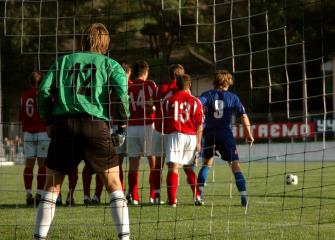Summary
Please enable javascript to play this video.
| Quick Facts: Athletes and Sports Competitors | |
|---|---|
| $62,360 per year | |
| No formal educational credential | |
| None | |
| Long-term on-the-job training | |
| 19,100 | |
| 5% (Faster than average) | |
| 1,000 | |
What Athletes and Sports Competitors Do
Athletes and sports competitors participate in organized, officiated sporting events to entertain spectators.
Work Environment
Athletes and sports competitors may work irregular schedules, including evenings, weekends, and holidays. They typically work more than 40 hours per week for several months during their particular sports season. They frequently work outside, so they may be exposed to all weather conditions.
How to Become an Athlete or Sports Competitor
No formal educational credential is typically required to become an athlete or sports competitor. Athletes must have athletic talent and an extensive knowledge of their sport. They typically get such knowledge through years of practice and experience at lower levels of competition.
Pay
The median annual wage for athletes and sports competitors was $62,360 in May 2024.
Job Outlook
Employment of athletes and sports competitors is projected to grow 5 percent from 2024 to 2034, faster than the average for all occupations.
About 2,100 openings for athletes and sports competitors are projected each year, on average, over the decade. Many of those openings are expected to result from the need to replace workers who transfer to different occupations or exit the labor force, such as to retire.
State & Area Data
Explore resources for employment and wages by state and area for athletes and sports competitors.
Similar Occupations
Compare the job duties, education, job growth, and pay of athletes and sports competitors with similar occupations.
More Information, Including Links to O*NET
Learn more about athletes and sports competitors by visiting additional resources, including O*NET, a source on key characteristics of workers and occupations.
 United States Department of Labor
United States Department of Labor






